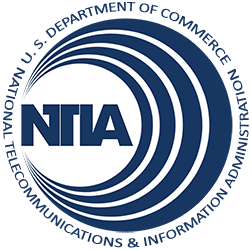Building on the Community Broadband Momentum
Today NTIA is hosting the first of several workshops focused on community broadband as we explore ways to build on the momentum of our successful broadband grant programs and look at what comes next.
The 2009 Recovery Act included more than $7 billion to expand access to high-speed Internet services to close the digital divide and spark economic growth. Through our Broadband Technology Opportunities Program, NTIA invested about $4 billion of that in 230 projects across the country that have built critical network infrastructure, opened or upgraded public computer centers and established broadband adoption programs. And through our State Broadband Initiative Program, we invested another almost $300 million to help states collect broadband data for the National Broadband Map and expand their statewide broadband capacity.
Today, these investments are enabling one-to-one computing programs and replacing old-fashioned textbooks with engaging online instructional materials in North Carolina classrooms. They are allowing Arkansas physicians to remotely examine patients located hundreds of miles away in far-flung rural corners of the state. They are supporting digital literacy training in low-income Latino communities across California. And they are bringing 4G LTE wireless broadband service to parts of the Navajo Nation that previously lacked even basic landline phone service.
As of the end of 2013, our grantees had built or upgraded more than 112,000 miles of fiber - enough to circle the earth four and a half times or get you halfway to the moon. They had connected more than 21,000 community anchor institutions, including about 8,000 K-12 schools, 1,300 libraries and 2,400 medical facilities. And they had established or upgraded 3,000 public computer centers and helped more than 600,000 households sign up for broadband. At the same time, our State Broadband Initiative Program has supported more than 200 local broadband planning teams across the country.
So the question now is: where do we go from here? It’s a question that affects communities across the nation that are investing in broadband to ensure they have the advanced telecommunications infrastructure – and tech-savvy citizenry – needed to drive growth, attract new businesses and remain competitive in the 21st Century economy.
And it’s a question for us here at NTIA since we want to continue to partner with those communities to keep moving the needle on broadband access and adoption. NTIA has a lot of expertise to share. Working closely with our grantees, we have learned how to build high-speed networks to link even the most remote, rural communities to the Internet backbone and supply high-capacity connections to schools, libraries, hospitals and other anchor institutions that have big bandwidth needs. Together, we have learned how to set up computer labs to serve people who don’t have broadband at home and how to design effective adoption programs to teach critical digital literacy skills to people who may never have turned on a computer before. And we have learned how best to help low-income households acquire discounted computer equipment and sign up for affordable broadband access.
As we look beyond our broadband grant programs, we are exploring ways that we can share this knowledge - as well as best practices and lessons learned from across our grant portfolio - to help communities working to close the digital divide. We envision using everything from toolkits and training programs, to webinars, wikis and workshops, to provide technical assistance, networking opportunities, funding leads and basic guidance for communities going down this path.
Today’s workshop brings together a cross-section of local, state, federal and tribal officials, telecom and other industry executives, consultants and activists to educate us about how they are tackling this challenge. We are talking with them about how we can support their efforts and help other communities that want to follow in their footsteps. We hope this is the beginning of an ongoing conversation with a broad range of stakeholders about how we can all keep the momentum going on community broadband.
